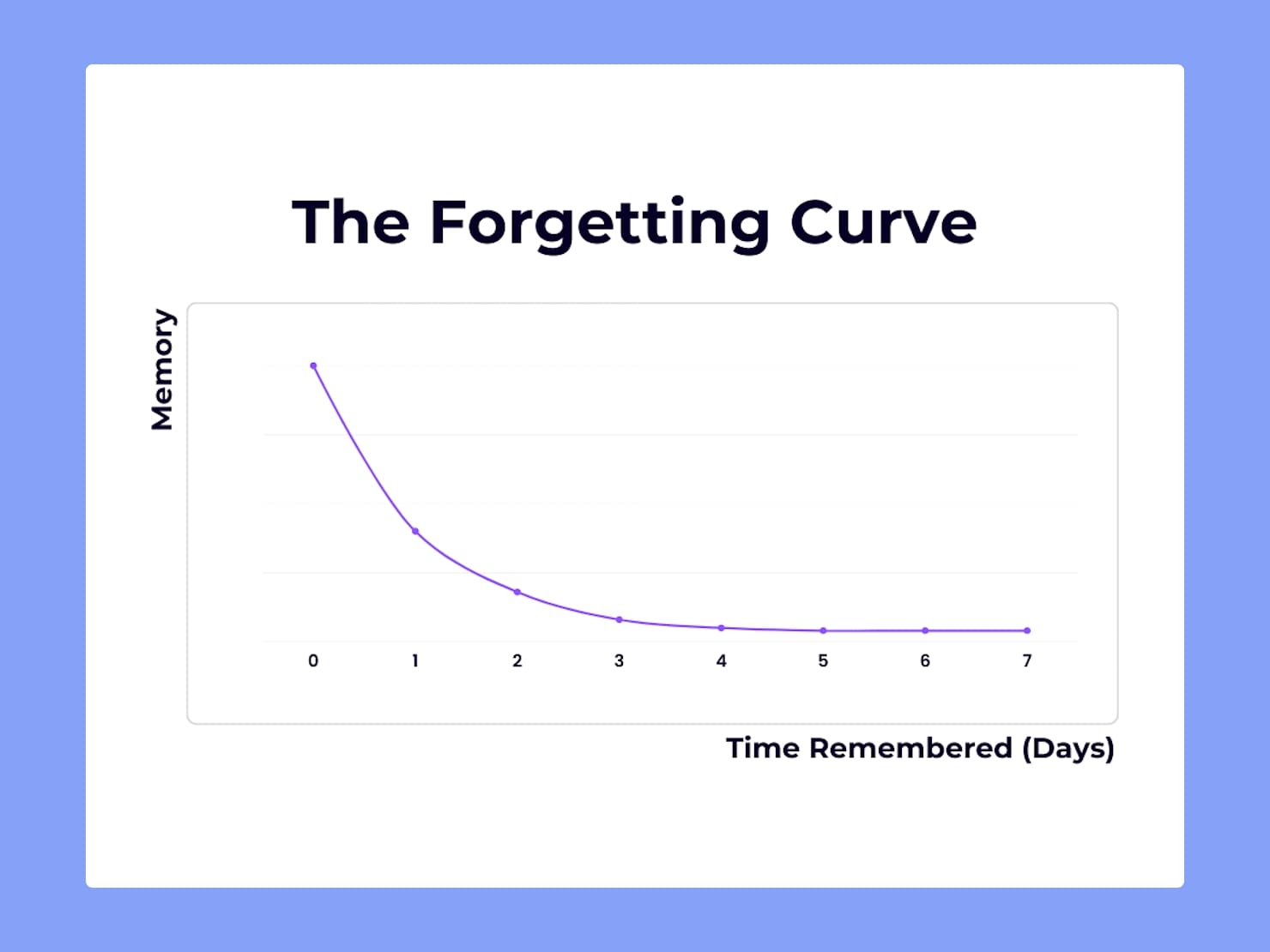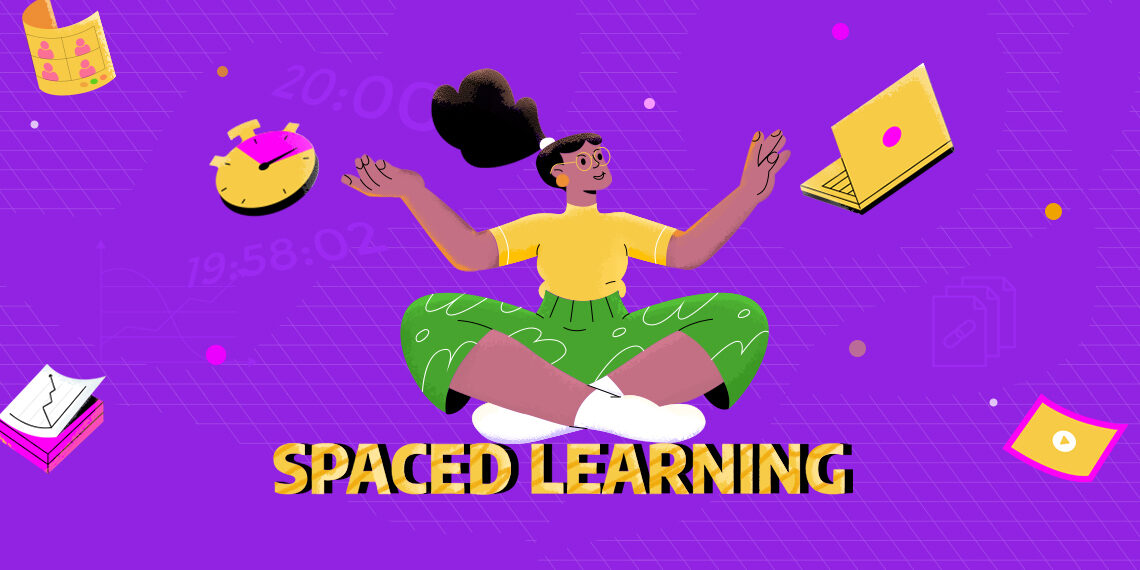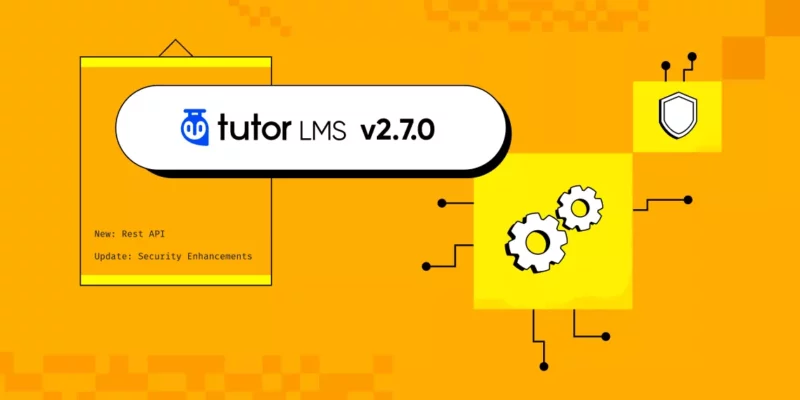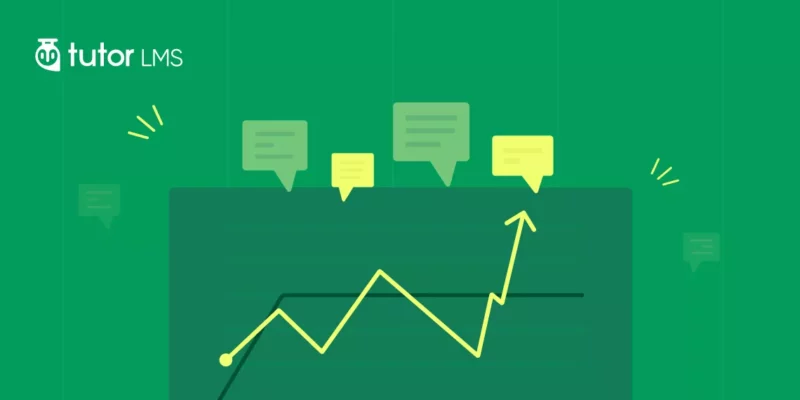Learners often need to juggle learning with heavy workloads and other distractions. But these lengthy gaps spent not recalling the material can cause them to forget the information.
This, of course, is a major issue for instructors because it’s no use teaching a subject if the learners cannot retain the information long enough.
Fortunately, experts have come up with an innovative concept called Spaced Learning to battle this aspect of human nature. In this article, we’re going to discuss what Spaced Learning is and how to apply it to your eCourse.
What is Spaced Learning
Poor learning retention is a problem educators have been trying to solve for years. And that’s how researchers came up with Spaced Learning. In this concept, learners learn a topic once, twice, and thrice with minute breaks between each iteration, until they have mastered it.
When the same information gets repeated to learners over and over again, the subject gets reinforced so much so that it’s better retained. It’s designed this way because Spaced Learning relies on the theory known as the Forgetting Curve.
This theory states that people are bound to forget information after a period if it is not reinforced. The following curve shows this decline in memory:

However, recalling, applying, and reinforcing the information helps prevent this, hence the idea of Spaced Learning.
Characteristics of Spaced Learning
While Spaced Learning primarily revolves around repetition, it does have more to it than that for it to be fully effective. As such, here is a list of all the characteristics a Spaced Learning eCourse should have:
1. Multiple Bite-Sized Modules
Information overload is never the way to go. Instead, go for bite-sized modules that are not only easier to digest, but also easily recapped, and are well suited to the learners’ attention spans.
2. Regular Study Breaks
As mentioned before, study breaks play an essential role in Spaced Learning. They give learners the time needed to take in the new information, process it, and even connect it to real-world applications.
3. Frequent Recaps of Previous Modules
Repetition is the primary feature of Spaced Learning and you need to add frequent recaps to your lessons and assignments to implement this.
4. Sequential Learning
The entire logic of Spaced Learning is based on the assumption that learners cannot break the sequence of the modules. But of course, in eLearning, this is totally possible unless you take the right steps to prevent it.
5. Interactive and Engaging Content
While interactive and engaging content is not a must-have in Spaced Learning, it is highly beneficial. Various studies prove that the more engaging the content is, the less likely learners are to forget it.
And in Spaced Learning where repetition is key, content like this also means that the learners are not bored by learning the same information over and over again.
6. New Concepts Linked With Old
Another way to recap and remind students about old concepts is to link them with new information. This helps them improve their understanding, solidifies their foundation, and maximizes their learning retention.
How to Apply It to Your eCourse
Now you know what Spaced Learning is, how it came about, and all its characteristics. So let’s get down to the meat of the matter — how to apply Spaced Learning to your eCourse.
Bite-Sized Modules
If we refer to our list of features that define this strategy, first up is bite-sized modules. For this, you’ll have to carefully design your course structure in such a way that each lesson is not too long but also long enough for you to explain the topic well.
Of course, this also means you might have an inordinate number of lessons, and many authoring tools have a limit to how many lessons you can add.
Luckily, using Tutor LMS, a freemium WordPress plugin, you can create unlimited topics and lessons for your eCourse. Not only that but it also boasts a powerful drag & drop Course Builder that can make building your course structure a breeze.
Study Breaks & Sequential Learning
Next up, let’s discuss Study Breaks. While this is easily implemented for live classes, you cannot say the same for self-paced courses.
One method is to add an instruction to take a break of 10 minutes, 15 minutes, or however long at the end of each lesson and trust that your students will follow it.
Another way is to incorporate the breaks into your Video Lectures. And, instead of having a break at the end of the video, place it between your lecture and any kind of class activity so they have something to look forward to after the break.
Last but not the least, you can use the Content Drip feature of Tutor LMS to add breaks that last a day or longer. It has the added benefit of not overwhelming the students as they don’t get access to so many modules all at once.
Of course, even if you don’t use this feature for breaks, it’s also a useful tool to enforce Sequential Learning, another important factor to keep in mind.
Recapping Previous Material
You can recap old material in countless ways and change it up every single time to make it fun and engaging. Below is a list of some of the things you can do to implement this:
- Give short summaries during lectures
- Use animated videos
- Hand out extra reading material
- Design informative graphics
- Create thought-provoking quizzes
- Host live group discussions
(Psst! Did you know that not only does Tutor LMS have a powerful quiz builder with 10 different question types but also boasts Zoom and Google Meet Integration?! Phew!)
Interactive and Engaging Content
Now, previously we mentioned class activity. This can be anything like a practice assignment, pop quiz, live group discussion, etc.
They’re a great way to make your content more interactive, engaging, and thus more memorable. It’s also a good way to recap but avoid boring your students, so really, it’s like hitting two birds with one stone!
Linking Concepts
And finally, we have Linking Concepts. As we mentioned earlier, doing this has many benefits including the improvement of learner retention and solidifying the students’ understanding. And things like narrative lectures, quizzes, interactive games, assignments, etc can help you put this into action.
Say No to Poor Learning Retention
Alrighty, we’ve come to the end of our discussion! This was our take on what Spaced Learning is and how you can apply it to your eCourse.
So, do you think you can say goodbye to poor learning retention? Personally, we think it’s totally possible to improve learning retention by leaps and bounds if paired with an advanced plugin like Tutor LMS!
Anyhoo, we’d love to hear what you have to say on the topic so feel free to give us a shout in the comments below!



